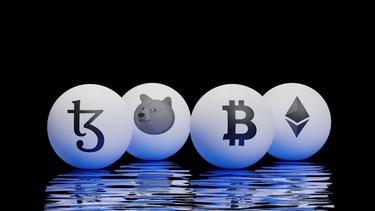Meme tokens
Meme tokens are a type of cryptocurrency[1] inspired by internet memes, jokes, or viral concepts. Despite their origin in humor, some meme tokens have gained significant popularity and market value. These tokens often have a strong community support and are known for their viral marketing campaigns and social media presence.
- Characteristics of Meme Tokens
- Popular Meme Tokens
- Market Dynamics
- Challenges and Considerations
- Meme tokens
- Origins and Evolution of Meme Tokens
- Characteristics of Meme Tokens
- Market Impact and Volatility
- Community and Cultural Influence
- Challenges and Criticisms
- Regulatory Perspectives
- Future Prospects
Characteristics of Meme Tokens
Meme tokens share several characteristics:
- Community-driven: Their value and popularity are often propelled by a strong, active community.
- Viral Nature: Many meme tokens gain attention through viral marketing and social media.
- Speculative Investment[2]: Due to their volatile nature, meme tokens are considered high-risk investments.
- Decentralization[3]: Like other cryptocurrencies[4], meme tokens operate on decentralized blockchain[5] technology.
Popular Meme Tokens
Some well-known meme tokens include:
- Dogecoin (DOGE): Originally created as a joke, Dogecoin has become one of the most recognized cryptocurrencies.
- Shiba Inu (SHIB): Known as the ‘Dogecoin Killer,’ it has gained popularity and market capitalization quickly.
Market Dynamics
The market for meme tokens is highly volatile, with prices influenced by social media trends, celebrity endorsements, and community activities. While some investors have realized significant gains, others caution against the speculative nature of these assets.
Challenges and Considerations
Investing in meme tokens poses challenges, including the potential for market manipulation, the impact of social media on token[6] prices, and the lack of intrinsic value beyond the community’s support.
Meme tokens
Meme tokens represent a unique and intriguing phenomenon within the cryptocurrency world, merging the realms of digital currency[7] with internet culture and humor. Originating as jokes or tributes to popular memes, these tokens have sometimes evolved into significant projects, amassing large communities and achieving substantial market capitalization. Understanding meme tokens requires exploring their origins, characteristics, impact on the cryptocurrency ecosystem, and the challenges they pose.
Origins and Evolution of Meme Tokens
Meme tokens often start as a form of digital jest, inspired by internet memes or popular culture references. The most famous example, Dogecoin (DOGE), was created in 2013 as a light-hearted alternative to Bitcoin[8], featuring the Shiba Inu dog from the “Doge” meme as its mascot. Despite its humorous beginnings, Dogecoin and similar tokens have seen periods of serious investor interest, driven by social media, celebrity endorsements, and a growing community of supporters.
Characteristics of Meme Tokens
Meme tokens share several key features, including a strong community base, often built around internet culture and humor. They tend to have a large circulating supply, with some projects having no maximum supply limit, leading to concerns about inflation[9]. Marketing for these tokens relies heavily on social media and influencer promotions, leveraging memes and viral content to gain attention and drive adoption.
Market Impact and Volatility
The impact of meme tokens on the cryptocurrency market can be significant. They introduce a high level of volatility, with prices often influenced more by social media trends and celebrity tweets than by traditional financial metrics or project fundamentals. This volatility can lead to rapid gains but also substantial losses, highlighting the speculative nature of investments in meme tokens.
Community and Cultural Influence
The communities behind meme tokens are pivotal to their success and unique appeal. These communities not only promote their tokens through social media but also engage in charitable activities, sponsorships, and other initiatives to support various causes. The culture surrounding meme tokens is one of inclusivity and fun, attracting individuals new to cryptocurrencies who might be drawn to the less serious and more approachable aspect of these projects.
Challenges and Criticisms
Despite their popularity, meme tokens face criticism for several reasons. Skeptics point out the lack of tangible utility or underlying value in many of these projects, contrasting them with cryptocurrencies that offer distinct technological innovations or solve specific problems. The market for meme tokens is also rife with scams and projects of dubious quality, as the hype around these cryptocurrencies makes them attractive targets for exploitation.
Regulatory Perspectives
The rise of meme tokens has not gone unnoticed by regulators, who express concerns about investor protection and market manipulation. The often-anonymous nature of cryptocurrency projects, combined with the hype-driven marketing of meme tokens, poses challenges for ensuring transparency[11] and fairness in the market.
Future Prospects
The future of meme tokens remains uncertain, with debates ongoing about their long-term viability and impact on the broader cryptocurrency ecosystem. While some see them as a passing fad, others believe meme tokens have a place in the market, reflecting the evolving nature of digital currencies[12] and the importance of community in the crypto space.
In conclusion, meme tokens are a fascinating aspect of the cryptocurrency landscape, embodying the intersection of digital currency, internet culture, and social phenomena. While they offer opportunities for community building and significant market movements, they also present risks and challenges that investors and regulators continue to navigate.
- Cryptocurrency — Digital or virtual currency secured by cryptography, facilitates secure, anonymous transactions.
- Speculative Investment — An investment with a high risk of loss but also a potential for significant returns.
- Decentralization — Distribution of power away from a central authority in the management of cryptocurrencies.
- Cryptocurrencies — Digital or virtual currencies that use cryptography for security and operate on a decentralized system, unlike traditional currencies.
- Blockchain — A decentralized digital ledger recording cryptocurrency transactions across multiple computers.
- Token — A unit of value issued by a project, representing various assets or utilities on a blockchain.
- Digital Currency — A digital or virtual currency that uses cryptography for security, making it difficult to counterfeit.
- Bitcoin — The first and most well-known cryptocurrency, was introduced in 2009 by Satoshi Nakamoto, who developed Bitcoin.
- Inflation — The rate at which the general level of prices for goods and services is rising, and, subsequently, purchasing power is falling.
- Volatility — Rapid and significant price movement, a common characteristic of cryptocurrencies.
- Transparency — The characteristic of blockchain technology that allows all transactions to be visible and verifiable by all network participants.
- Digital currencies — Digital forms of money that exist only in electronic form, not in physical form like coins or notes.
- CoinMarketCap. 'The Phenomenon of Meme Coins', 2021.
- Forbes. 'What Are Meme Coins?', 2021.



